- Home
- Ramachandra Guha
The Picador Book of Cricket Page 6
The Picador Book of Cricket Read online
Page 6
Barney was already a legend in my family. He was a contemporary of my father’s and because I thought of my old man as . . . well, old, I naturally enough considered Syd as having one and a half feet in the grave. But he was a spry old bird and kept himself in good condition by regular exercise, moderation in all things, an enquiring mind and steady application in his civilian job as clerk and calligrapher.
But that was more than thirty years ago. Now, here he was, the same man, still glaring from furrowed brows, still stiff enough to suggest rigor mortis. After five minutes of nostalgic rumination I approached him.
‘Mr Barnes,’ I said, ‘you won’t know me, but . . .’
His head jerked from the cricket, his eyes twinkled and his face broke into the familiar smile of truculent superiority.
‘Hollowood,’ he said, ‘Bernard Hollowood, Albert’s lad. How are you?’
We shook hands and I congratulated him on his state of preservation. He began to talk about my father, about what Albert would have done to the rubbishy bowling being served up by the Test idols in the middle, and then he was suddenly engulfed by fans, young codgers of seventy and eighty, who descended on him like a pack of cub reporters. And of course I lost him.
My father regarded Barnes as the greatest bowler of all time, though he invariably spoke disparagingly of him in other contexts than cricket. They had played together for Staffordshire during Syd’s golden years and had battled against each other on numerous occasions in the League. Barnes, my father said, was as mean as they come, and ‘difficult’ – by which I understood him to mean that he didn’t care very much for Barnes’s brand of heavy sarcasm and bitter comment. But there was no doubt whatever about his genius. ‘Oh, yes, he could bowl ’em all, but he got his wickets with fast leg breaks. Marvellous, absolutely marvellous, he was. Fast leg breaks and always on a length.’ Others, Barnes included, have claimed that he bowled every known ball except the googly – swingers, off breaks, top spinners, the lot. But undoubtedly his chef d’œuvre was the leg break. He took a long run, a bounding, springy run, and as his arm came over in a perfect action, mid-on and mid-off could hear the snap of his long fingers as they rolled and squeezed the ball into its revolutionary parabola. There has been no one like him. O’Reilly could bend them from leg, but not with Barnes’s consistency or devil: Douglas Wright could bowl fastish leg breaks, but not on the length that destroys and goes on destroying.
He was a strange man, a social misfit in the cricket scene of Victorian, Edwardian and Georgian days. He might have been a Keir Hardie or a George Lansbury or a Frank Cousins if he had turned his mind to politics, for he was forever kicking against the pricks and quarrelling with the Establishment. He considered himself undervalued by his employers, insufficiently recognized, and overworked, and he would down tools as readily as an East End docker. Throughout his long playing career he carried outsize chips on his shoulder, and not one of the many clubs he played for could ever be certain of his unqualified loyalty and cooperation.
He resented discipline not because he wanted complete freedom but as a matter of principle. At all levels of the game he had to be handled with kid gloves – by captains, colleagues and committees. Outspoken himself, he resented outspokenness in others and displayed acute sensibility to any word or deed that slighted his personal Bill of Rights. Put on to bowl at the ‘wrong’ end, he would scowl and sulk and develop mysterious physical disorders, sprains and strains. Time and time again his career was broken by some real or imagined injustice. He would be on top of the world, the master bowler wanted by his country, a dozen counties, scores of league clubs: and then he would disappear from public view. At the height of his powers he dropped out of the England team for years at a stretch. He sampled county cricket, played a match or two and quit.
The most common reason for these surprising exits was finance. Cricketers are poorly paid today: in Barnes’s time they scratched a living and unless they found jobs during the winter – which wasn’t easy – those with family responsibilities existed only marginally above the subsistence line. The old pro of the sentimental school of cricket writers is a dear fellow, nut-brown and salty-tongued, who reminisces cheerfully with pipe and pint at every opportunity. In reality, a majority of the county cricketers who ended their careers before the Hitler war found their middle and old age blighted by poverty. There were no pension funds for them, no large lump sums from benefit matches, and only a handful, the spectacularly successful, picked up good money on the side from journalism, authorship, lecturing, advertising, coaching and sponsoring. There was no money in radio, and television was not yet in action.
The players had no union to protect them, so that they were more or less compelled to accept whatever wage their counties thought reasonable, and the counties were governed by autocratic amateurs who treated the professionals with the kindly condescension that they reserved for their domestic servants, gardeners and local tradesmen. And it was this that made Barnes see red. His trouble, at root, was that he demanded equality of opportunity and the abolition of class distinctions fifty or sixty years before the rest of the country, and at a time when the lot of the vast majority was docile servitude.
His take-it-or-leave-it attitude of no compromise was a new phenomenon in industrial relations – on the employees’ side – and obviously it produced deadlock when matched by similar obstinacy from the bosses. Barnes asked for travelling expenses on top of his wage; the county told him that the wage included the travelling expenses; Barnes said that if they didn’t meet his modest request he would leave the club; the county said they couldn’t be dictated to by players. End of contract. Barney retires fuming to his tent. He told the Lancashire secretary that he expected the county to find him a decent job during the winter and was rebuffed, the secretary saying that ‘it couldn’t be bothered’. Barnes was promised a benefit match if he served the club dutifully and successfully for eight years, and Syd asked for the Roses Match, Lancashire v. Yorkshire, at Old Trafford on a bank holiday. The secretary explained that the club had never done as much for other players and couldn’t make an exception for Barnes. So Barnes walked out.
On the field he was always a trier, always active mentally and physically. He wanted the game to be run his way and was openly critical of almost every captain he played under. If his advice was not heeded he grumbled and then retreated into cold fury. He set himself the highest standards of play and could not tolerate inefficiency in others. His masters paid by results and Barnes sweated and schemed to achieve rewarding figures, and anyone who reduced the effectiveness of his efforts through slackness, inability or misfortune had to suffer the consequences, scathing looks and words and a display of icy scorn.
His colleagues admired his skills, but were terrified of incurring his displeasure and found games with him a sore trial. So there was no great outcry when the selectors omitted the name Barnes, S. F., from their national elevens. I suspect that on these occasions – and they were numerous – all the more easy-going Players and most of the Gentlemen breathed a sigh of relief . . .
Barnes was always certain that he knew better than the umpire, and his method of registering displeasure with a decision was to stare at the official hard and long, his lean features loaded with disgust and contempt. These staring sessions seemed to last for minutes on end and were acutely embarrassing to everyone except Barnes. I was batting with him in his last match for Staffordshire at Castleford in 1935 when he was given out, lbw, to the Yorkshire fast bowler Hargreaves. From the other end he looked dead in front, but Barnes stood his ground and glowered at the umpire for so long that I honestly thought he had refused to go. The fielders watched, immobile and fascinated, and the umpire looked distinctly uncomfortable. Then, with the passing of aeons, old Syd turned and marched to the pavilion with a face like that of Mr Hyde.
Thirty years ago I wrote a piece for the Boy’s Own Paper in which I described Barnes’s method of psychological warfare against tremulous batsmen.
All who have been fortunate enough to play with him . . . are agreed that as a bowler of length and spin, Barnes has no equal. Even one of our youngest cricketers, the record-breaking Len Hutton, has said, ‘One of my best innings was against Sydney Barnes when I was sixteen; I scored 69 not out.’ I remember that innings of Hutton’s, and I recall the warm praise it received from Barnes. The master, or the ‘maestro’ as he is known in Staffordshire, turns the ball with equal facility from leg or off without ever losing a perfect length. His field placing is a work of art. It is not a matter of ‘a bit deeper’ or ‘round a little’. When Barnes moves him a fieldsman must proceed to an appointed spot, mathematically determined, and stay there.
Denbighshire were batting and near ‘stumps’ on the first day had lost three wickets – all to Barnes. The game had been held up by rain and Staffordshire badly wanted another wicket before the close. The last over was called and the spectators moved to the gates. Barnes was bowling. The batsman defended stubbornly. Five balls were played carefully. Then, in the middle of his long springy run for the last ball, Barnes stopped. He motioned to me at point (two yards from the bat). His long fingers made some sign which I did not understand, but I moved round to silly mid-off. After all, there was only one ball. Once again Barnes turned to bowl, and once again his eyes swept the field as he began his run up to the wicket. I was watching, my hands cupped. His delivery arm was almost over when he halted suddenly, and looked at me with a face as black as thunder. Then, while the crowd laughed derisively, he walked up the pitch and led me (almost by the hand) to the position he had in mind. ‘The old buffer,’ I thought. ‘How does he know what the batsman will do?’
By this time the poor batsman was in a terrible state. He looked hard at me, and I saw panic in his eyes. Barnes bowled. The batsman prodded forward and the ball popped, so gently, into my waiting hands. It was typical of the ‘maestro’.
. . . My last memory of him will always be of Barnes sitting late at night in the lounge of a Manchester hotel. He is surrounded by young Staffordshire players and we are begging him to reveal some of his secrets. We buy him drinks and he twinkles and chuckles. He rolls a ball in his long fingers and manipulates it like an Epstein fondling a clay bust. The topspinner like this, see! The leg break like so. The outswinger, well, hold the ball this way . . . It is obvious that he considers the demonstration a waste of time. He can tell us what to do, but we couldn’t possibly do it. There was only one Barnes. ‘Whatever you do,’ he adds, ‘don’t bowl outside the off stump. Don’t wait for the batsman to get himself out – always attack, and always bowl at the stumps.’
Finally, let me quote from Ian Peebles on Barnes. In his excellent book Batter’s Castle Ian writes:
Walter Robins was playing for Sir Julien Cahn’s team, a very strong side, against Staffordshire at Stoke, and was amongst those shot out for less than 80 by the youthful sixty-year-old Barnes. The position was indeed parlous when they came in to bat again, well behind, and Sir Julien took desperate counsel of Walter, who recommended one and all having a bash. To this suggestion Sir J. replied that he had better lead the way, so that Walter in due course took middle and leg and awaited his first experience of Barnes with the new ball. It was quite something; in fact, Walter recalls it as one of the most beautiful overs he has ever seen bowled. The first was the outswinger, which just missed the off stump. The second was an in-dipper, and the defender pulled his umbilicus smartly out of the way as it shot over the leg stump. The next was a leg break and, just to keep things symmetrical, this missed the off stump again; a yorker, an off break and then the last ball of the over, another leg break. Trying to smother it, the batsman just snicked it and almost before it arrived in the wicketkeeper’s gloves all present appealed. To their astonishment, and that of the striker, the umpire said, ‘Not out,’ and Walter lived to fight another day, or at least another over. Be it said for Sir Julien, who liked to win, that on seeing his adviser in such a tangle he laughed until he cried. Meanwhile Walter had come to a powerful decision, and at the start of the next over, abandoning all thought of trying to parry this superb artistry, he rushed down the wicket and let the bat go. In the circumstances it was sheer vandalism, but it worked, and 16 runs came from the face, edges and back of the bat. This was too much for Barnes, who, with the temperament inseparable from genius, snatched his sweater and left the battle to lesser fry.
⋆ ⋆ ⋆
A question the Yorkshire writer A. A. Thomson liked to ask was: ‘Who was the finest all-rounder in the history of the game?’ Thomson would then supply the answer himself: ‘No one can say for certain, but we know that he batted right-handed and bowled left, and that he was born in Kirkheaton.’
In time the career of Garfield Sobers would consign this question to the realm of antiquity, but until about 1960 it remained a clever one to ask. For those vital statistics fitted both George Herbert Hirst and Wilfred Rhodes. Hirst bowled left-arm fast-medium, and was a master of late inswing. Rhodes bowled slow left-arm, with consummate control and artistry. Hirst batted in the middle order, an attacking player whose particular glory was the pull shot. Rhodes was a careful batsman, a sharp runner of short singles who for both Yorkshire and England steadily worked his way up from No. 11 to No. 1. And both were born in the stone village of Kirkheaton.
The Kirkheaton twins took Yorkshire to many a county championship, but it was Rhodes who had much the better Test record. He also lived longer. On his ninetieth birthday he was the subject of this loving portrait by the former England wrist-spinner Ian Peebles.
IAN PEEBLES
The Colossus of Rhodes (1967)
In Spain, when they found a champion bullfighter, they used to say there must have been a lot of salt in the air the day he was born. In days gone by there must have been more sulphur than salt in the air of Kirkheaton, but it seems to have been equally stimulating. In this small Yorkshire village were born two of the greatest cricketers of all time.
If Yorkshire cricket ran to canonization it is pretty certain that the senior of these, George Hirst, would be its patron saint. Apart from his cricketing ability, he was a man of such integrity, courage and completeness of character that, on his death, after thirty years in retirement, the Daily Mail devoted its leader to him, citing his life as an example to the nation. This must be almost unique among tributes to sportsmen.
It is perhaps an equally unusual tribute to a man to start by acclaiming his elder, but Wilfred Rhodes would be the first to do so. Ninety years old on 27 October, he would have no other peer in the Yorkshire Hierology.
Only on referring again to Mr Sydney Rogerson’s admirable biography was I reminded that he started life cleaning railway engines. Any cricketing lover of the steam locomotive would see that in robust, practical, purposeful character there must have been a profound bond between the cleaner and his charges. Ironically, he lost his job largely because of his single-minded devotion, otherwise the name of Rhodes might well have been coupled with those of Gresley and Stanier, rather than linked with those of Hirst and Hobbs.
All the world knows what Rhodes achieved in his long and astonishing career and, to some extent, what he said and thought. In writing of him the little I can add is of random personal glimpses and stories of him over forty years of intermittent encounters and conversations with mutual friends. These I will retail exactly as the subject would have them related – ‘warts and all’.
The first time I saw this august figure close to was at Scarborough, just a year after he had won a Test match for England at the age of forty-eight. He played Bob Wyatt hard on to his left leg, whence the ball rebounded on to his right and, after a scuffle like a man trying to chop a rat lodged between his ankles, on to the stumps. The young smirked, but avoided the keen, unsmiling blue eye.
There were no frills about his batting. He had taken good sound basic materials and, by unremitting application, turned himself into a Test-match opening batsman. His attitude to the job was perfectly illustrated by Aubrey Faulkner�
�s description of the Englishmen’s first encounter with the South African googly quartet on matting wickets. Hobbs conquered them by sheer skill. Rhodes refused to be defeated. Thus, when Hobbs had scored 50 out of the first 60 runs with elegant ease, Rhodes would have held them at bay by crowding everything into action, from the toe of his boot to the point of his thumb. Rueful jesters who addressed him as a lucky old so-and-so received the terse unarguable reply ‘I’m still ’ere.’
He was not an effusive man while an active cricketer. When he spoke it was very much to the point, and sound sense. The listener was expected to respond in like vein and he was not a man for flippant banter. On tour in the West Indies he grew irritated with Ewart Astill, a musician who liked to joke, and ended one exchange with the stern reproof ‘Tha’s nowt but roody piano sergeant.’ Which, incidentally, goes to show that the arts had their proper, but not exaggerated, place in a sensible man’s scale of things.
It was on this tour of 1929–30 that Rhodes showed that his stamina and uncanny skill made him, at the age of fifty-two, still a most potent force. Illness and injury elsewhere threw an immense amount of work upon him, and he bowled over 500 overs in the heat. Never did the dashing West Indian batsmen get hold of him on their shirt-front wickets. Nigel Haig used to recall Wilfred bowling one end throughout a humid day, dropping unerringly into a bowler’s footmark just outside the off stump. This was not to the home supporter’s taste and there were great shouts of ‘You no sportsman, Mistah Rhodes – you hidin’ de ball.’ They might as well have appealed to the Rock of Gibraltar. ‘I’ll give ’em hiding the ball,’ he said, and dropped the next over all on the same tiny patch.

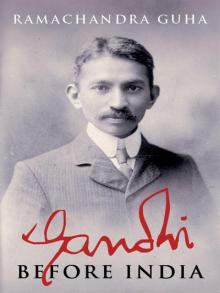 Gandhi Before India
Gandhi Before India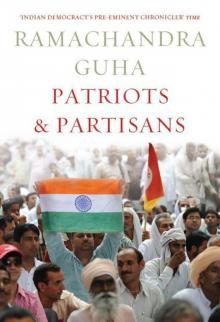 Patriots & Partisans
Patriots & Partisans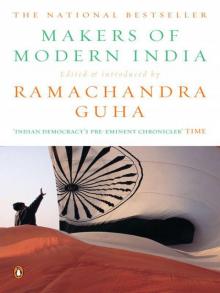 Makers of Modern India
Makers of Modern India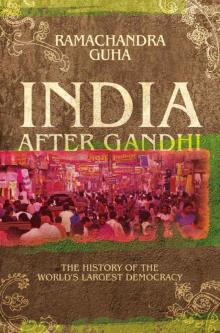 India After Gandhi: The History of the World's Largest Democracy
India After Gandhi: The History of the World's Largest Democracy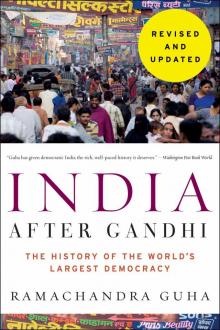 India After Gandhi Revised and Updated Edition
India After Gandhi Revised and Updated Edition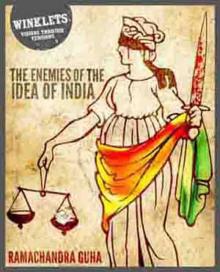 The Enemies of the Idea of India
The Enemies of the Idea of India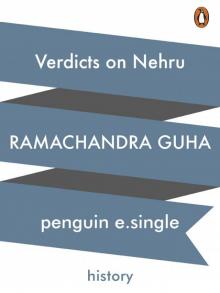 Verdicts on Nehru
Verdicts on Nehru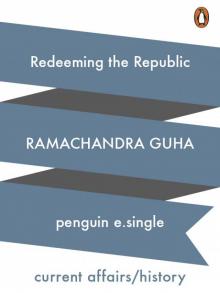 Redeeming the Republic
Redeeming the Republic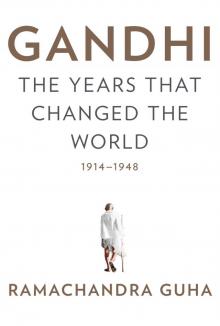 Gandhi
Gandhi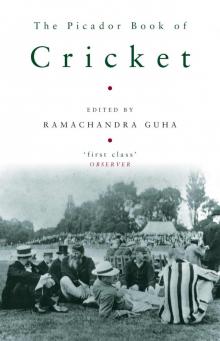 The Picador Book of Cricket
The Picador Book of Cricket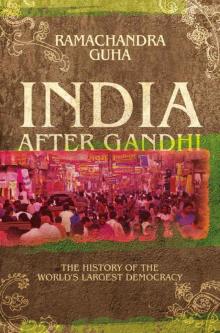 India After Gandhi
India After Gandhi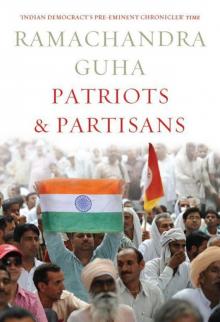 Patriots and Partisans: From Nehru to Hindutva and Beyond
Patriots and Partisans: From Nehru to Hindutva and Beyond